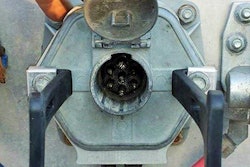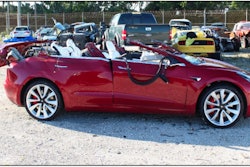 Got your own example of a do-it-yourself solution to a problem related to truck equipment or the owner-operator business? Send your story to [email protected] with the “highway hacks” subject line to be considered for this monthly feature.
Got your own example of a do-it-yourself solution to a problem related to truck equipment or the owner-operator business? Send your story to [email protected] with the “highway hacks” subject line to be considered for this monthly feature.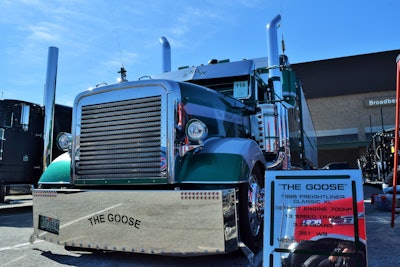 “The Goose,” the 1996 Freightliner Classic and dry van combo of Daniel and Phyllis Snow
“The Goose,” the 1996 Freightliner Classic and dry van combo of Daniel and Phyllis SnowChristened “The Goose,” the custom 1996 Freightliner Classic/dedicated dry van combo of Harrison, Ark.-based Daniel and Phyllis Snow is memorable not only for its 140 inches’ worth of a custom-redesigned ICT sleeper the Snows pulled from salvage and outfitted themselves for the comforts of home on the road about 7 years ago.
Another project undertaken around the time they were putting the sleeper together is a four-foot walk-in storage compartment they built into the front of their spread-axle dry-van trailer, accessible from the tractor’s deck catwalk via a door assembly, to house tools, parts and other supplies.
It’s a modification Daniel suggests has scads of potential for emulation by any single-trailer owner with mechanical expertise and, like the Snows, plenty of time spent on the road away from the comforts of established relationships with diesel shops you know well. If you missed it several weeks back when the Snows described their process building the work/storage space, hear that edition of the Overdrive Radio podcast below or read on.
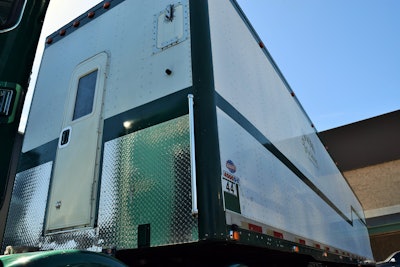 The compartment repurposes existing trailer space for a new use. Shown here, the door into the space.
The compartment repurposes existing trailer space for a new use. Shown here, the door into the space.Before building it, “we blocked off four feet of the front of the trailer and ran four weeks with just a partition wall to make sure it wouldn’t mess up any of our loads,” Daniel says.
Cost: “Extremely minimal,” other than sweat equity, Daniel says.
The pair used repurposed load bars for the partition wall. They found them in a dumpster after being left by truckers serving a particular shipper and then thrown out by staff. Two-by-fours make up the frame for shelves that run across the width of the van – the wood came gratis as well, “out of a load of shopping carts we hauled to Wilmington, N.C.,” Daniel says, left behind in their van.
The pair won a $50 gift card at a trucking show and used that at Home Depot for the plywood for shelves.
The only hard cost other than the screws holding the shelving together was for the door assembly, purchased at a Camping World in Hammond, La., for $200. It’s about a $700 door assembly typically, Daniel says, but this one had been sitting two years after being ordered and not picked up, covered in dust in a corner as the shop tried to get someone to buy it.
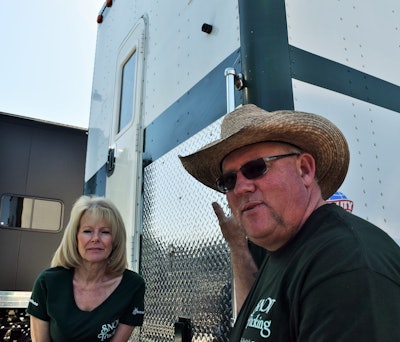 Phyllis and Daniel Snow
Phyllis and Daniel SnowThe other alternative the pair considered before building — a toolbox approximately one-fifth the size of what they have now, to fit under the trailer — Daniel priced at $2,800. In short, building the compartment clearly brought much more bang for the buck.
At once, a trade-off for the storage space, and the sizable sleeper, is payload reduction – the combo’s empty weight now typically runs at about 42,500 lbs. They’ve got an extra tag axle on the tractor to accommodate higher forward weights.
Yet in the 7 years since it was built, they’ve lost out on a load because of it no more times than you can count on one hand.


